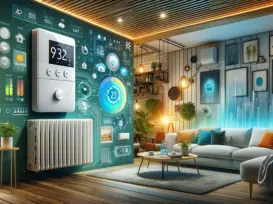Grus Home Energy - HVAC optimization
Maximizing Efficiency: The Key to HVAC Optimization
Heating, ventilation, and air conditioning (HVAC) systems play a crucial role in maintaining indoor comfort and air quality in buildings. However, these systems can account for a significant portion of a building’s energy consumption, making it essential to optimize their efficiency. HVAC optimization involves implementing strategies to improve the performance of these systems while reducing energy usage and costs.
One of the key factors in HVAC optimization is regular maintenance. Keeping HVAC equipment clean and well-maintained can help prevent system breakdowns, improve performance, and extend the lifespan of the equipment. This includes changing air filters regularly, inspecting ductwork for leaks, and scheduling professional tune-ups. Regular maintenance can also help identify and address any issues before they escalate into costly repairs.
Another important aspect of HVAC optimization is the use of programmable thermostats. These devices allow users to set specific temperature schedules for different times of the day, reducing energy consumption when heating or cooling is not needed. By adjusting the temperature settings based on occupancy patterns, programmable thermostats can help save energy and lower utility bills.
In addition to regular maintenance and programmable thermostats, implementing energy-efficient equipment and technologies can further improve HVAC system performance. Upgrading to high-efficiency HVAC units, such as Energy Star-rated systems, can significantly reduce energy consumption and operating costs. Other energy-saving technologies, such as variable-speed drives, occupancy sensors, and smart controls, can also help optimize HVAC performance and enhance comfort levels.
Proper insulation and sealing of the building envelope are essential for maximizing HVAC efficiency. A well-insulated and air-sealed building can prevent heat loss in the winter and heat gain in the summer, reducing the workload on HVAC systems. Insulating attics, walls, and floors, as well as sealing air leaks around windows, doors, and ducts, can help maintain consistent indoor temperatures and improve energy efficiency.
Regular monitoring and analysis of HVAC performance are critical for identifying opportunities for optimization. Tracking energy usage, temperature trends, and system run times can help pinpoint inefficiencies and areas for improvement. By collecting and analyzing data, building owners and facility managers can make informed decisions about optimizing HVAC systems and implementing energy-saving measures.
HVAC optimization not only benefits building owners and occupants but also contributes to environmental sustainability. By improving the efficiency of HVAC systems, buildings can reduce their carbon footprint and lower greenhouse gas emissions. Energy-efficient HVAC practices help conserve natural resources and support efforts to combat climate change.
In conclusion, HVAC optimization is essential for maximizing efficiency, reducing energy consumption, and improving indoor comfort. By implementing strategies such as regular maintenance, programmable thermostats, energy-efficient equipment, proper insulation, and monitoring and analysis, building owners can enhance the performance of their HVAC systems and achieve significant cost savings. Investing in HVAC optimization is a smart decision that pays off in terms of energy savings, operational efficiency, and environmental stewardship.
Blog, Smart Home Automation , February 19, 2024 , Energy Consumption Monitoring, Energy-saving technology for homes, Enhancing Heat Pump Efficiency, Green home solutions, Heat pump efficiency, HEMS, Home Energy Management Systems, HVAC optimization, Intelligent climate control, Real-time energy data analysis, Smart Thermostats, Sustainable heating and cooling
©2025 All Rights Reserved. Grus IoT Co.,Ltd.
